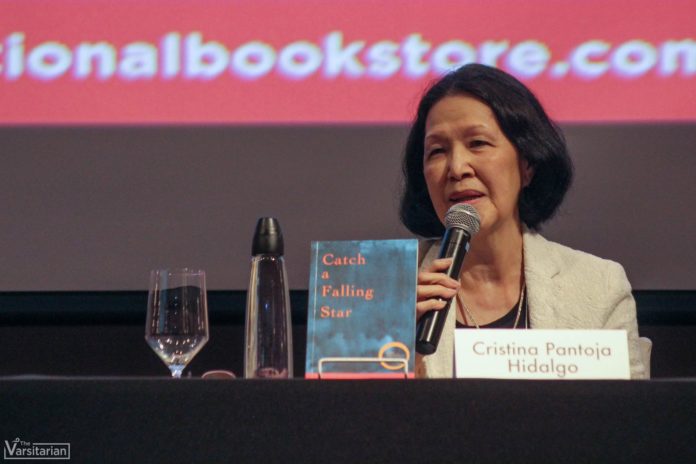FOR THREE of the University’s premier writers, creative non-fiction (CNF) is the genre of the techonological age.
Cristina Pantoja-Hidalgo, director of the Center for Creative Writing and Literary Studies (CCWLS), attributed the success of CNF to the advent of new journalism or literary journalism which has proliferated through the accessibility of the Internet and social media.
“I think part of it has to do with blogs, which are nonfiction. This is referred to by critic Thomas Larson as ‘sudden memoir’ in which you write an account of something you have just witnessed or experienced,” she said in an interview with the Varsitarian.
However, such “ease” in publishing does not necessarily mean the works are of superior quality.
“There is so much nonfiction being written on the net which are not necessarily literary,” she added. “People post things, and some things are [quite petty]. ‘I ate hotdog today,’ ‘I ate hamburger today,’ ‘I ate pie today.’”
For John Jack Wigley, director of the UST Publishing House, CNF is “the genre of the new age” and that of millennials. He attributed this to the emergence of new forms of literary expression such as blogs, food reviews, travel essays and posts on social media.
Dawn Marfil, resident fellow of the CCWLS, however, explained that the ‘petty’ posts actually turn the tide in the genre’s favor because of their truthful nature.
“The reason why CNF is on the rise is because the audience demands stories that are more realistic. They have a hunger for a different sort of knowledge that you get when you get to know people and lives. It coincides with the rise of reality TV shows and normal people appearing on TV on their supposedly unguarded visages,” she said.
A bold and personal art
Hidalgo points out the importance of the writer’s tasteful and cautious selection of topics to include in writing CNF.
“The challenging thing about creative non-fiction is the risk of intruding the privacy of other people and revealing too much about yourself which becomes narcissistic if you are not careful,” she said.
For Marfil, there is an inherent challenge to distance oneself from the subject, which is often personal.
“There is that ‘push and pull’ with the writer whether they could write about something that is too close to them because they have to have some sort of ‘psychic distance’ between themselves and the topic and it is hard to do that with creative nonfiction,” Marfil said.
She added that it also presents a challenge on the part of the author as one is essentially of one’s own personal experience.
“Unlike fiction, you create a world, create a story, you know where you want to go. With creative nonfiction, you are dealing with a small pocket of your life,” she said.
Wigley cited that the challenge of the genre is the ability to write for an audience instead of writing for mere popularity.
”Readers will always resonate with writers who are honest, bold and true. In a way, they have a deeper sense of finding out if a writer is telling an honest truth or faking it. But a writer must always write because he wants to tell a story, not just because he wants to be popular. Ultimately, you are what you write,” he said in an interview through e-mail.
Competition in the market
Hidalgo asserted that people are heavily influenced by popular media in the selections they consume.
“Literary tastes today are very much influenced with the desire to get the inside stories, the ‘iWitness’ reports, reality television, which are also influenced by the net,” she said.
Marfil also noted how CNF uses the same techniques as fiction, although she argued that “there is more flexibility in creative nonfiction since you could play around with it, mix it, and cross it with other genres,” hence, its capability to compete with fiction.
For Wigley, the two genres inhabit different camps and while CNF has new things to offer in terms of storytelling, he believes that they indeed can and do coexist.
“They are two sides of the same pole. There is market for each and should never be any competition at all,” he said. Cedric Allen P. Sta. Cruz and Nikko Miguel M. Garcia














